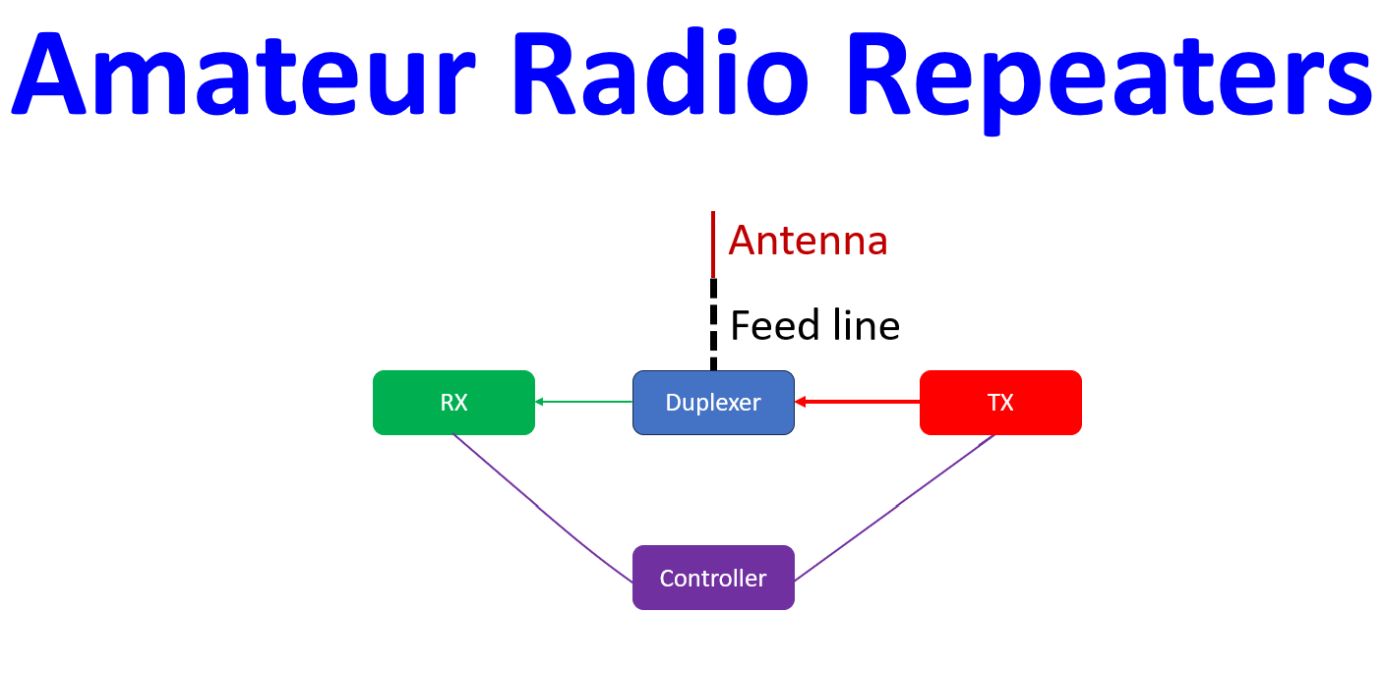Amateur Radio Repeaters
Amateur Radio Repeaters
Amateur radio repeaters are most commonly deployed in 2 meter VHF band. If you go for the whole list of repeaters, you can find that there are repeaters for 10 m, 6 m, 1.25 m, 70 cm, 33 cm, and 23 cm. Sometimes they can even be on higher specialized amateur bands including laser and light. As the higher frequencies usually propagate in line of sight, obstacles can interfere with communication. This is different from HF communication in which sky waves reflected from the ionosphere enable long distance communication beyond major obstacles like mountains. Hence the need for amateur radio repeaters to enhance the range of communication, especially for hand-held and mobile devices. Repeaters are typically positioned on highest available locations in the region so that they have a good range of communication.

There are some special considerations in the construction of repeaters as they need sensitive receivers as well as powerful transmitters to co-exist in same location, usually using the same antenna and feedline. In some instances, they use two different antennas and feedlines. There are also occasions when receivers and transmitters were positioned at a good distance with wireless link between them as it was not possible to avoid overloading of the sensitive receiver by the simultaneous transmissions. So the repeater system is a full duplex system with its own complexities.
Rarely simplex repeaters which record for a period of time like one minute and then transmit the recorded message have also been used. But this would have the person recording the message hearing his own message again and there could be confusion between users regarding recording times of other users. Many modern repeaters are also linked to other services like EchoLink, DMR, D-STAR and AllStar, which make the range of communication truly global.
Basic components of a repeater system include antenna, feedline, receiver, transmitter, duplexer and control system. Patching systems are in place when other services like phone patching or connection with EchoLink, DMR, D-STAR, AllStar etc are needed. As mentioned earlier, antenna and feedline can be single or separte for the transmitter and receiver. Repeater output may be in the range of +50 dBm (Decibel-milliWatt) while the repeater needs to receive a signal in the range of -110dBm. dBm is power level expressed in decibels relative to a millWatt. 30 dBm will be one Watt while 20 dBm will be 100 milliWatts and +50 dBm 100 Watts. So there is a difference of 160 dB between the transmitter and receiver, which is huge!
That is why the repeater system needs a good duplexer for isolation between the transmitter and receiver. Another role of a duplexer is to prevent RF interference with other stations operating nearby, for which resonant cavities are used in duplexers. Even though there is a good difference between the transmit and receive frequencies of the repeater, duplexer prevents desensitization of the receiver by the transmitted high power signal. Duplexer for repeater have the shape of tall canisters and pass only extremely narrow range of frequencies through and reject all others. Sometimes the insertion loss because of the duplexer may necessitate the use of separate antenna and feedlines. But usually the benefit of using a duplexer is more than the negative effect of the insertion loss.
Antenna used for repeaters need to be high performance, omnidirectional, durable and efficient. They are placed either on a high tower or the highest structure possible. Good antenna systems could cost as much as some radios, even excluding the feedline. But they can perform well for decades if properly installed and maintained.
The feedline for a repeater is better implemented with a Hardline rather than a simple coaxial cable. Hardline, as the name implies is more like a pipe with a central conductor than like the usual flexible coaxial cable which we routinely use for amateur radio operations. As they are stiff, they are difficult to work with and naturally more expensive. But the signal loss is much less for a Hardline compared to a standard coaxial cable. This is needed because we have to receive weak signals as well as send the transmitted high power up to the antenna which may be quite high. Hardline being more durable reduces the difficulty of repeated tower climbs to replace it.
Repeater controller is a small computer which is programmed to control the repeater. It can announce the repeater callsign periodically using CW or voice. It can be used to interface the repeater with other facilities to which repeater signals can be patched as discussed earlier. Remote access to the repeater controller is possible in modern repeaters to enable and disable CTCSS (Continuous Tone Coded Squelch System) or PL (Private Line) tone access.
Offset is the difference between the transmit and receive frequencies of the repeater. Typically it is plus or minus 600 kHz on 2 m. It may be 5 MHz on 70 cm, but there are local variations between repeaters. Public documentation is usually available for the offset of open repeaters. Knowledge of the offset of a given repeater is needed when you try to access it.